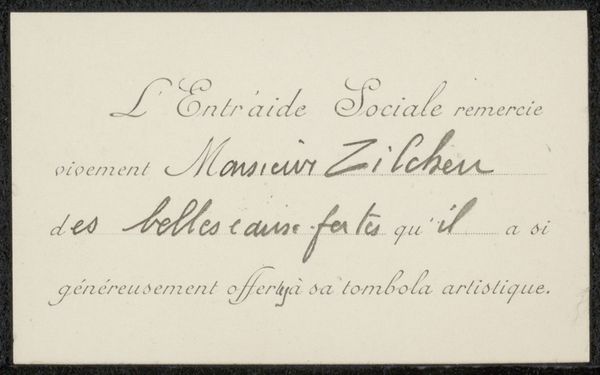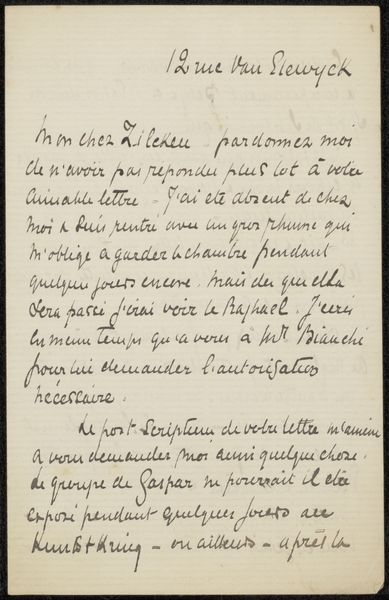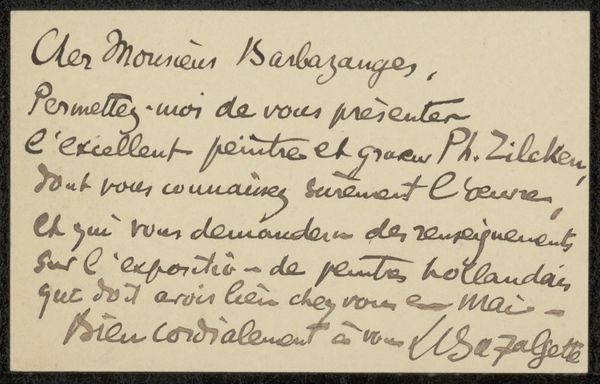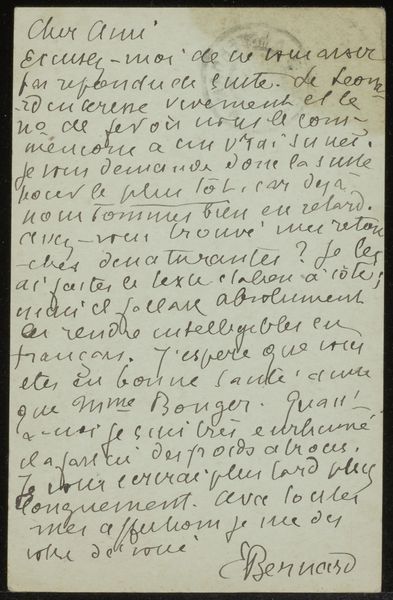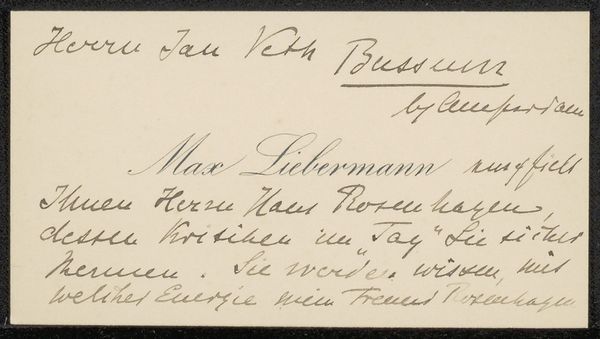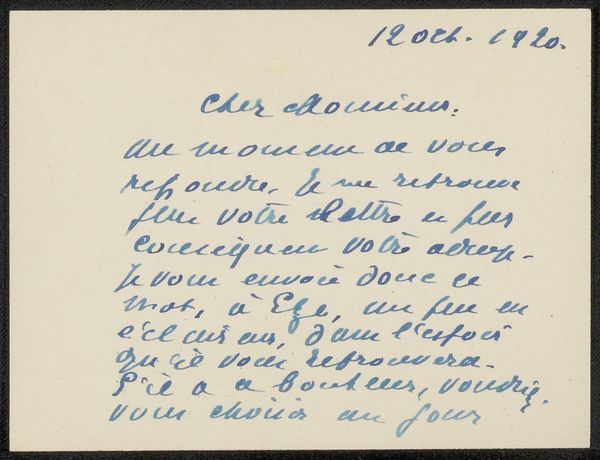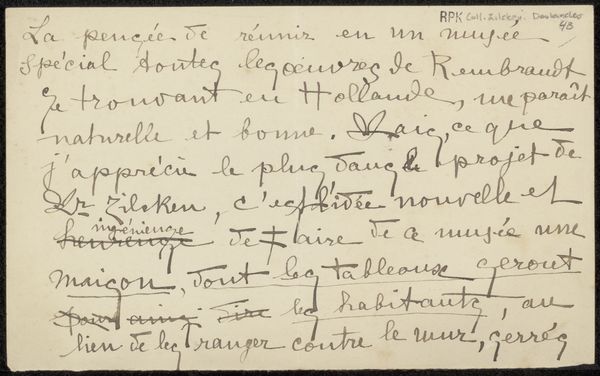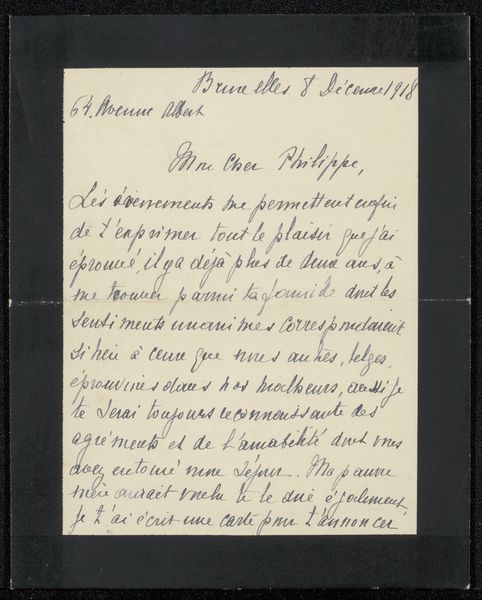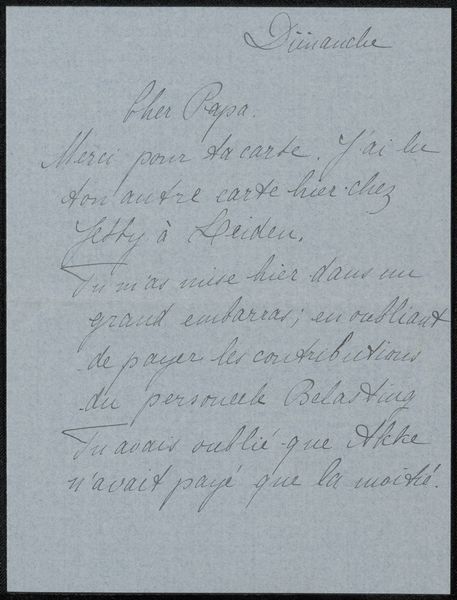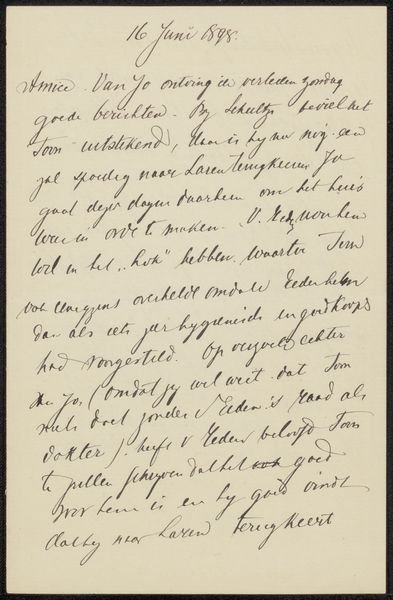
drawing, paper, ink
#
portrait
#
drawing
#
hand-lettering
#
hand lettering
#
paper
#
ink
#
hand-written
#
calligraphy
Copyright: Rijks Museum: Open Domain
Editor: Here we have Guillaume le Verdier’s "Visitekaartje aan Jean de Resgré," created sometime between 1867 and 1930. It's ink on paper, a formal calling card. The handwritten text, a recommendation it seems, gives it a wonderfully personal touch. What strikes you about this small drawing? Curator: Well, looking at it as a historian, I find the card fascinating for what it tells us about social networks and artistic patronage in the late 19th century. Consider the function of these calling cards. It was about introduction, almost like a physical social media post. Editor: So, it was a form of social currency? Curator: Exactly. Le Verdier, an attaché at the French embassy, uses his position to introduce a painter to someone, likely of importance. This little card signifies access, influence. How does that impact our understanding of 19th-century art? Were networks essential to being recognised? Editor: That is a great point. The note talks of someone who paints "the Dutchmen" ('peintre les Hollandais"). It also says that he met this person at The Hague. Were diplomatic circles hubs for artists seeking opportunities? Curator: It would seem that this was one channel, perhaps among several ways for them to build relations. Consider the power dynamics at play. Was this a sincere attempt to promote a deserving artist, or was it a favour exchanged within the upper echelons of society? And how might such a system affect the style and subject matter of the artist, considering the expectations of patrons? Editor: Food for thought. I guess, by reading beyond the text, we have a better appreciation of this personal gesture of patronage. Thank you! Curator: And, hopefully, a richer appreciation for the structures behind artistic creation itself.
Comments
No comments
Be the first to comment and join the conversation on the ultimate creative platform.
